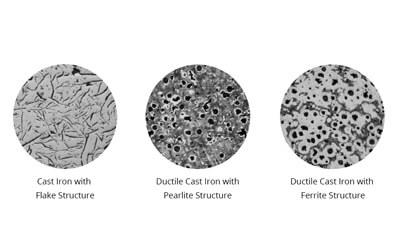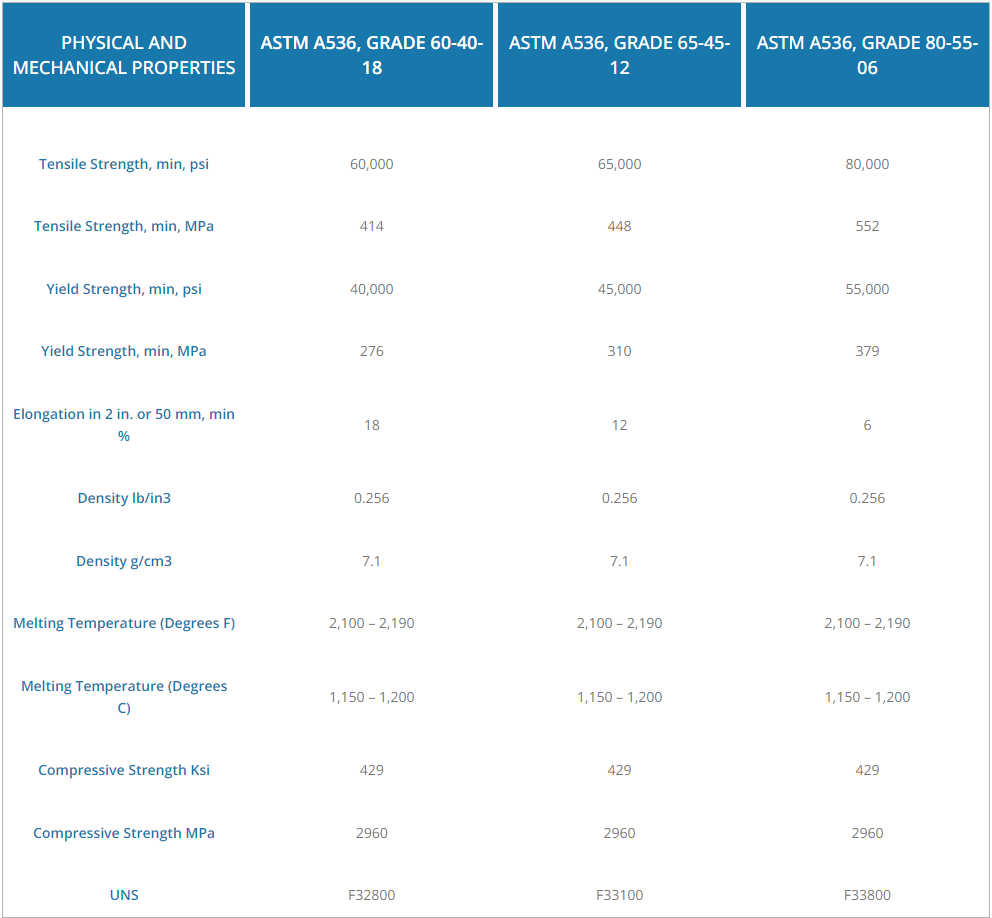Ductile iron, also known as spheroidal or nodular iron, is a group of iron alloys with a unique microstructure that gives them high strength, flexibility, durability, and elasticity. It contains over 3 percent carbon and can be bent, twisted, or deformed without breaking, thanks to its graphite flake structure. Ductile iron is similar to steel in its mechanical properties and far more robust than standard cast iron.
Ductile iron castings are created by pouring molten ductile iron into molds, where the iron cools and solidifies to form the desired shapes. This casting process results in solid metal objects with excellent durability.
What Makes Ductile Iron Unique?
Ductile iron was invented in 1943 as a modern improvement over traditional cast iron. Unlike cast iron, where graphite appears as flakes, ductile iron has graphite in the form of spheroids, hence the term “spheroidal graphite.” This structure allows ductile iron to withstand bending and shock without cracking, offering far greater resilience than traditional cast iron, which is prone to brittleness and fractures.
Ductile iron is made primarily from pig iron, a high-purity iron with over 90% iron content. Pig iron is preferred because it has low residual or harmful elements, consistent chemistry, and promotes optimal slag conditions during production. This source material is a key reason why ductile iron foundries prefer pig iron over other sources like scrap metal.
Properties of Ductile Iron
Different grades of ductile iron are created by manipulating the matrix structure around the graphite during casting or through additional heat treatment. These minor compositional variations are designed to achieve specific microstructures, which in turn determine the properties of each grade of ductile iron.
Ductile iron can be thought of as steel with embedded graphite spheroids. The characteristics of the metallic matrix surrounding the graphite spheroids significantly influence the properties of ductile iron, while the graphite itself contributes to its elasticity and flexibility.
There are several types of matrices in ductile iron, with the following being the most common:
- 1. Ferrite – A pure iron matrix that is highly ductile and flexible, but has low strength. Ferrite has poor wear resistance, but its high impact resistance and ease of machining make it a valuable component in ductile iron grades.
- 2. Pearlite – A composite of ferrite and iron carbide (Fe3C). It is relatively hard with moderate ductility, offering high strength, good wear resistance, and moderate impact resistance. Pearlite also provides good machinability.
- 3. Pearlite/Ferrite – A mixed structure with both pearlite and ferrite, which is the most common matrix in commercial grades of ductile iron. It combines characteristics of both, providing a balanced approach to strength, ductility, and machinability.
The unique microstructure of each metal alters its physical properties:

Common Ductile Iron Grades
While there are many different ductile iron specifications, foundries routinely offer 3 common grades:
Advantages of Ductile Iron
Ductile iron offers several benefits for designers and manufacturers:
- • It can be easily cast and machined, reducing production costs.
- • It has a high strength-to-weight ratio, allowing for durable yet lightweight components.
- • Ductile iron provides a good balance of toughness, cost-effectiveness, and reliability.
- • Its superior castability and machinability make it suitable for complex parts.
Applications of Ductile Iron
Due to its strength and ductility, ductile iron has a wide range of industrial applications. It is commonly used in piping, automotive parts, gears, pump housings, and machinery bases. Ductile iron’s resistance to fractures makes it ideal for safety applications, such as bollards and impact protection. It is also widely used in the wind-power industry and other high-stress environments where durability and flexibility are essential.
Post time: Apr-25-2024




